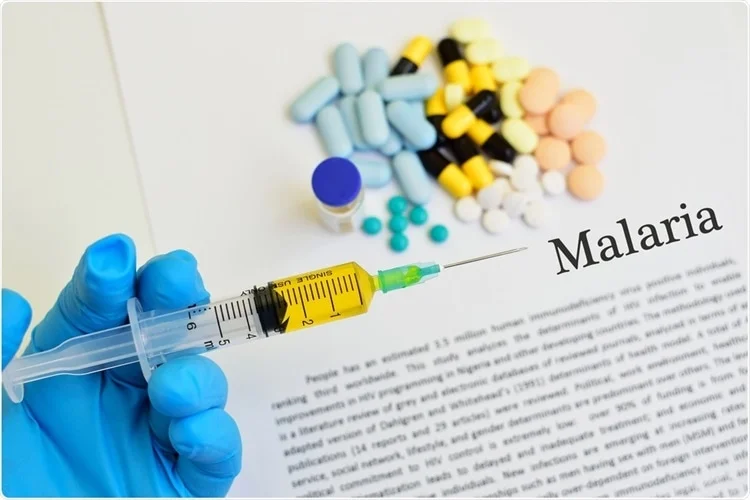Context:
Recently Cameroon (in Africa) became the first country in the world to incorporate the RTS, S malaria vaccine for children into normal national immunization services.
RTS, S Malaria Vaccine
- UNICEF project: The vaccine rollout is part of a UNICEF project, with British firm GSK awarded the contract for the first delivery.
- Funding: UNICEF’s initiative is sponsored by a contract worth up to $170 million, resulting in the availability of 18 million doses over three years.
- Manufacturing & Supply: The Serum Institute of India will manufacture the second jab (R21) that Oxford University plans to roll out, with a target of 100 million doses per year.
- Dose Schedule: For children aged five months and up, the vaccine requires four doses, with a fifth dose possible after one year in areas with persistent malaria risk.
Significance of vaccine
- Lifesaving Potential: The vaccine marks a crucial step in preventing and mitigating the impact of malaria, particularly in high-risk areas.
- Equal Access: GAVI and other organizations aim to provide equal access to the vaccine for children in the world’s poorest countries.
Global Malaria Burden
- Malaria remains a major danger worldwide, particularly among children under the age of five, with more than 30 nations experiencing moderate to high transmission rates.
- Regional disparities: Africa accounts for 94% of malaria cases and 95% of deaths worldwide, but India contributes 66% of malaria cases in the WHO South-East Asia Region.
Global Initiatives Against Malaria
a. WHO’s Global Malaria Program (GMP):
- The WHO Global Malaria Programme (GMP) is responsible for coordinating WHO’s global efforts to control and eliminate malaria.
- The World Health Assembly acknowledged the Global Technical Strategy for Malaria 2016-2030 in May 2015, which was amended in 2021.
- The initiative aims to reduce worldwide malaria incidence and mortality rates by at least 90% by 2030.
b. E-2025 Initiative: The WHO launched the E-2025 initiative in 2021. The effort intends to halt malaria transmission in 25 countries by 2025. The WHO has identified 25 countries with the capacity to eliminate malaria by 2025.
c. Malaria Elimination Initiative: Spearheaded by the Bill and Melinda Gates Foundation, aims to eradicate malaria using a variety of measures, including increased treatment accessibility, mosquito population reduction, and technological development.
Malaria cases in India:
- In 2022, India was responsible for a frightening 66% of malaria cases in the WHO South-East Asia Region.
- Plasmodium vivax, a protozoal parasite, was responsible for over 46% of the cases in the region.
- Despite a 55% decline in cases since 2015, India continues to contribute significantly to the global malaria burden.
- India confronts problems, including an increase in cases in 2023 due to unseasonal rains.
- India and Indonesia accounted for almost 94% of malaria deaths in the WHO South-East Asia Region.
Indian Initiatives Against Malaria:
a. National framework:
- The National Framework for Malaria Elimination 2016-2030 is aligned with WHO’s approach and plans to eliminate malaria in India by 2030 while maintaining malaria-free zones.
- The National Vector-Borne Disease Control Programme addresses a variety of vector-borne diseases, including malaria, using prevention and control strategies
b. National Malaria Control Programme (NMCP):
- At the time of India’s independence in 1947, 22% of the country’s population was believed to be affected by malaria, with 75 million illnesses and 0.8 million fatalities annually.
- The National Malaria Control Programme (NMCP) was established in 1953 to battle the deadly effects of malaria.
- It is based on three main activities: insecticidal residual spray (IRS) with DDT, case monitoring and surveillance, and patient treatment.
c. High Burden to High Impact (HBHI) Initiative: In 2019, four states (West Bengal, Madhya Pradesh, Jharkhand and Chhattisgarh) launched an initiative to accelerate the pace of malaria elimination in these states.
Challenges
- Malaria and Climate Change: Climate change has emerged as a major factor impacting malaria transmission and burden.
- Regions such as eastern India, Bangladesh’s hill tracts, sections of Myanmar, and Indonesian Papua are particularly vulnerable as temperatures rise and climate conditions change.
- Inadequate infrastructure: Malaria primarily affects low and middle-income nations with inadequate infrastructure and funding. Vaccine producers have limited incentive to develop malaria vaccines and have continued to focus on industrialized world markets. Even it did not receive the same level of attention as other diseases like HIV/AIDS.
Way forward:
- Structured Vaccine Rollout: Prioritize areas with seasonal or perennial malaria transmission, using age-based or seasonal administration approaches.
- Sustainable Approaches: Malaria responses must be long-term and resilient in light of climate change.
- Regional adaptation: Regions that are vulnerable to the effects of climate change on malaria should adjust their preventive and treatment efforts accordingly.
- Collaboration Efforts: Effective vaccine distribution and implementation require cooperation among governments and international organizations.
- Global Collaboration for Research and Development: Continued funding in R&D for better vaccinations and malaria prevention strategies.

